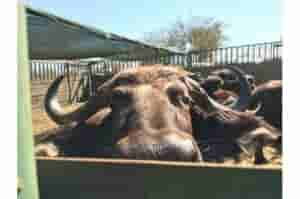A new study by the Oregon State University (OSU) centered on the foot-and-mouth disease among buffalo in South Africa. The research gave an insight into how extremely contagious pathogens can persist and reach an endemic stage in a population.
The Findings
The findings were published in “Science Magazine” and were related to the COVID-19 pandemic. Lead author Anna Jolles, an epidemiology professor in OSU’s Carlson College of Veterinary Medicine with a dual appointment in the College of Science, shared, “Is there any way of really limiting the infection after it becomes endemic? A study in a lab can’t answer that because this is a question at the population scale, and in the lab, you don’t have whole animal populations and all the variation among hosts, pathogens, or the environment. Looking in wild hosts is one way to get insights into how this can play out.”
Jolles and her co-authors, OSU assistant professor Brianna Beechler and associate professor Jan Medlock, noted that foot-and-mouth disease does not cause serious illness among the buffalo population. However, if it spreads to cattle and other cloven-hoofed species, it can cause painful sores in the mouth and the feet. The study looked at the transmission mechanism among buffalo herds in South Africa’s Kruger National Park.
The Transmission
Jolles pointed out that many studies focused on the “wildfire” stage when the pathogen is already running through the population. However, none of the studies looked into where the pathogen goes after it passed the wildfire stage. They concluded in their research that almost all buffalo in regions where the food-and-mouth disease is contagious contracted the local strains and achieved some level of immunity.
However, young calves are more susceptible to infection after four to six months of age. The transmission for this population was the primary pathway for the researchers. After the young calves recovered from the acute infection, the researchers found some retained the virus in their tonsils, which can lie dormant for months. Because it was retained there, the virus could be transmitted to the earliest born calves, continuing into a cycle.
However, the researchers noted that the foot-and-mouth disease would not persist in buffalo populations with only the “childhood infection” pattern of transmission. It also does not perform well on carrier transmission. The researchers are yet to know precisely how the virus persists. The researchers believe that the strain could be similar to the flu in humans.
The virus changes so much and so rapidly that the buffaloes’ immune system does not recognize the virus anymore.

